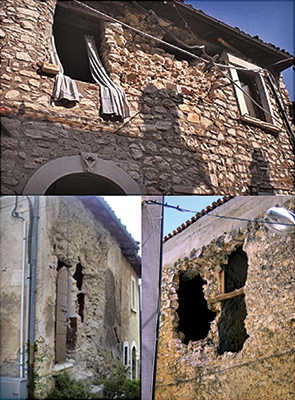Title of Project:
RE-BOND – REsponse of as-Built and strengthened three-leaf masONry walls by Dynamic tests
Hosting Research Infrastructure:
University of Bristol
No. of Users:
4
Team Leader:
University “G. D’Annunzio” of Chieti-Pescara
Enrico Spacone
Team:
University of Porto
Humberto Varum
Aristotle University of Thessaloniki
George Manolis
KERAKOLL Group
Paolo Casadei
Summary of Project:
The present research proposes to test the dynamic behaviour of three–leaf masonry walls (two external leaves made of irregular stones poorly or not connected in the transversal direction separated by loose material infill in the centre) representative of a construction technique found throughout the seismic–prone Mediterranean countries. The proposed tests will also investigate the effects that the vertical component of the ground motion may have on the walls’ behaviour.
Shake table tests under different loading conditions on single and T-shape masonry walls are planned, with the aim to investigate:
1) The in–plane behaviour up to failure of single isolated rectangular as–built walls;
2) The in–plane behaviour up to failure of single rectangular as–built walls connected to an orthogonal wall (T walls);
3) The influence of the vertical ground motion component on the behaviour and strength of the as built walls of points 1) and 2);
4) The effectiveness of strengthening techniques that include: a) grout injections carried out with a compatible mortar; b) addition of reinforcing devices (either steel rods or bundled steel fibers) to connect the outer stone leaves of the three-leaf walls; c) enhancement of the connections with the orthogonal wall for T walls using steel rods.
The considered specimens will be built so as to reproduce a typical configuration used for three-leaf masonry walls throughout old Italian historic centers. Similar configurations are found in other Mediterranean and non-European seismic-prone countries.


